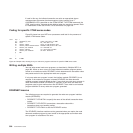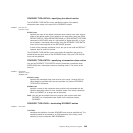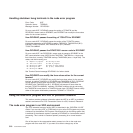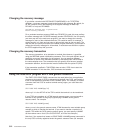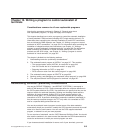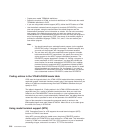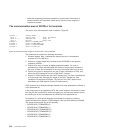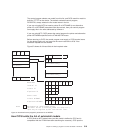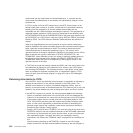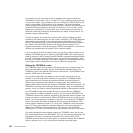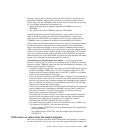v Create some model TERMINAL definitions.
v Define the terminals to VTAM, so that their definitions in VTAM match the model
TERMINAL definitions in CICS.
v If you are using model terminal support (MTS), define the MTS tables to VTAM.
v Use the default autoinstall control program for terminals (DFHZATDX), or write
your own program, using the source-code of the default program and the
customization examples in this information as a basis. You can write an entirely
new program if the default program does not meet your needs, but you are
recommended to try a default-based program first. You can write your program in
any of the languages supported by CICS—the source of the default program is
provided in assembler language, COBOL, PL/I, and C. You can rename your
user-written program.
Note:
1. You should compile your autoinstall control program (or the supplied
DFHZCTDX) using a Language Environment - enabled compiler, and
you must run the program with Language Environment enabled.
2. You can have only one active autoinstall control program to handle
both terminals and APPC connections. You specify the name of the
active program on the AIEXIT system initialization parameter. The
DFHZATDY program described in Chapter 12, “Writing a program to
control autoinstall of APPC connections,” on page 543 provides the
same function for terminal autoinstall as DFHZATDX, but in addition
provides function to autoinstall APPC connections initiated by BIND
requests. Both DFHZATDX and DFHZATDY provide function to install
shipped terminals and connections. So, for example, if you want to
autoinstall APPC connections as well as VTAM terminals, you should
use a customized version of DFHZATDY, rather than DFHZATDX.
Coding entries in the VTAM LOGON mode table
CICS uses the logmode data in the VTAM LOGON mode table when processing an
autoinstall request. Autoinstall functions properly only if the logmode entries that you
define to VTAM have matches among the model TERMINAL definitions that you
specify to CICS.
The tables in Appendix A, “Coding entries in the VTAM LOGON mode table,” on
page 833 show, for a variety of possible terminal devices, what you must have
coded on the VTAM MODEENT macros that define, in your logmode table, the
terminals that you want to install automatically. Between them, the tables show the
values that must be specified for each of the operands of the MODEENT macro.
Some of the examples in the appendix correspond exactly to entries in the
IBM-supplied logon mode table called ISTINCLM. Where this is so, the table gives
the name of the entry in ISTINCLM.
Using model terminal support (MTS)
CICS Transaction Server for z/OS supports the model terminal support (MTS)
function of VTAM 3.3 and above.
Using MTS, you can define the model name, the printer (PRINTER), and the
alternate printer (ALTPRINTER) for each terminal in a VTAM table. This information
is sent by VTAM in an extended CINIT RU. CICS captures it as part of autoinstall
processing at logon, and uses it to create a TCTTE for the terminal.
516 Customization Guide



